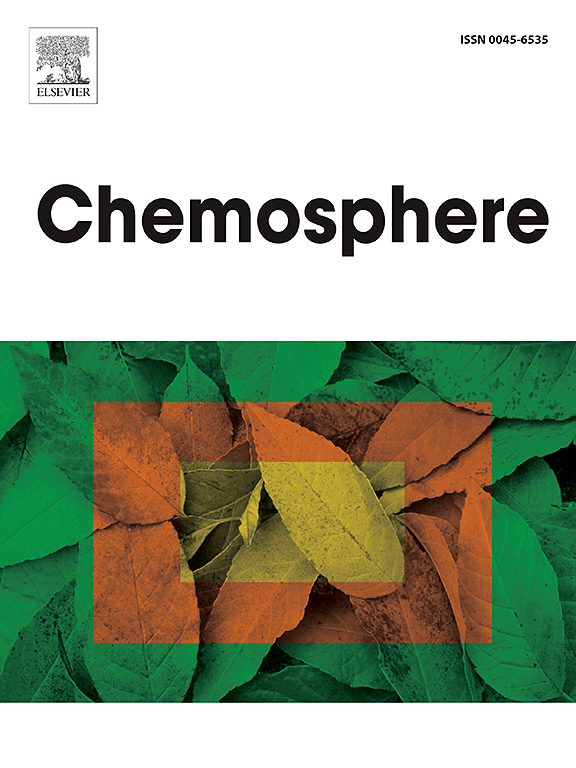Tropospheric ozone as an atmospheric pollutant and short-lived climate forcer in the Third Pole
IF 8.1
2区 环境科学与生态学
Q1 ENVIRONMENTAL SCIENCES
引用次数: 0
Abstract
The Third Pole (TP) consists of cold, dry and ecologically fragile regions of 12 countries in Asia, encompassing an area of 7.1 million km2. The enormous ice mass of TP is the source of fresh water for about 2 billion people in the surrounding regions. The environmental condition of TP has been gradually decreasing due to the increase in anthropogenic activities in and around the region for the past two decades. Ozone is an important oxidant and a greenhouse gas in the troposphere. It has positive feedback on temperature, and harms human health and ecosystems at higher concentrations. We investigate the spatiotemporal characteristics, long-term trends, and the climatic impact in terms of radiative forcing (RF) of tropospheric column ozone (TPO) in TP derived from the satellite measurements of Microwave Limb Sounder (MLS) and Ozone Monitoring Instrument (OMI) in 2005–2020. The analysis shows a high annual average TPO (35–40 DU) in the south and east, but lower values (20–30 DU) in the inner TP. There is a significant increase in TPO in TP, with higher values of about 0.3 DU yr−1 in the north TP and are highest in the southeast TP during summer (up to 0.35 DU yr−1) and the north TP in winter. This increase in tropospheric ozone alone contributes to a radiative forcing up to 0.3 Wm-2 near the tropopause (125 hPa) and triggers a warming up to 0.4 °C within the troposphere of TP. The ozone-induced temperature change is stronger during 2014–2019 compared to that in 2005–2014, suggesting the impact of high anthropogenic activities and associated pollution on the TP climate in recent decades. Therefore, the increasing tropospheric ozone could affect the public health, ecosystems and climate of the region.

对流层臭氧作为第三极大气污染物和短期气候驱动因子
第三极(TP)由亚洲12个国家的寒冷、干燥和生态脆弱地区组成,面积710万平方公里。TP巨大的冰块是周边地区约20亿人的淡水来源。近20年来,由于人类活动的增加,青藏高原的环境状况逐渐恶化。臭氧是对流层中一种重要的氧化剂和温室气体。它对温度有正反馈,浓度较高时危害人类健康和生态系统。利用微波边缘测深仪(MLS)和臭氧监测仪(OMI) 2005-2020年的卫星观测数据,研究了青藏高原对流层柱臭氧(TPO)辐射强迫的时空特征、长期趋势和气候影响。分析表明,东部和南部的年平均TPO较高(35 ~ 40 DU),而中部的TPO较低(20 ~ 30 DU)。TP的TPO显著增加,夏季以北部最高(约0.3 DU yr - 1),东南部最高(可达0.35 DU yr - 1),冬季以北部最高。仅对流层臭氧的增加就会在对流层顶附近(125 hPa)产生高达0.3 Wm-2的辐射强迫,并在青藏高原对流层内引发高达0.4°C的升温。与2005-2014年相比,2014-2019年臭氧引起的温度变化更强,表明近几十年来高人为活动和相关污染对青藏高原气候的影响。因此,对流层臭氧的增加可能会影响该地区的公共卫生、生态系统和气候。
本文章由计算机程序翻译,如有差异,请以英文原文为准。
求助全文
约1分钟内获得全文
求助全文
来源期刊

Chemosphere
环境科学-环境科学
CiteScore
15.80
自引率
8.00%
发文量
4975
审稿时长
3.4 months
期刊介绍:
Chemosphere, being an international multidisciplinary journal, is dedicated to publishing original communications and review articles on chemicals in the environment. The scope covers a wide range of topics, including the identification, quantification, behavior, fate, toxicology, treatment, and remediation of chemicals in the bio-, hydro-, litho-, and atmosphere, ensuring the broad dissemination of research in this field.
 求助内容:
求助内容: 应助结果提醒方式:
应助结果提醒方式:


